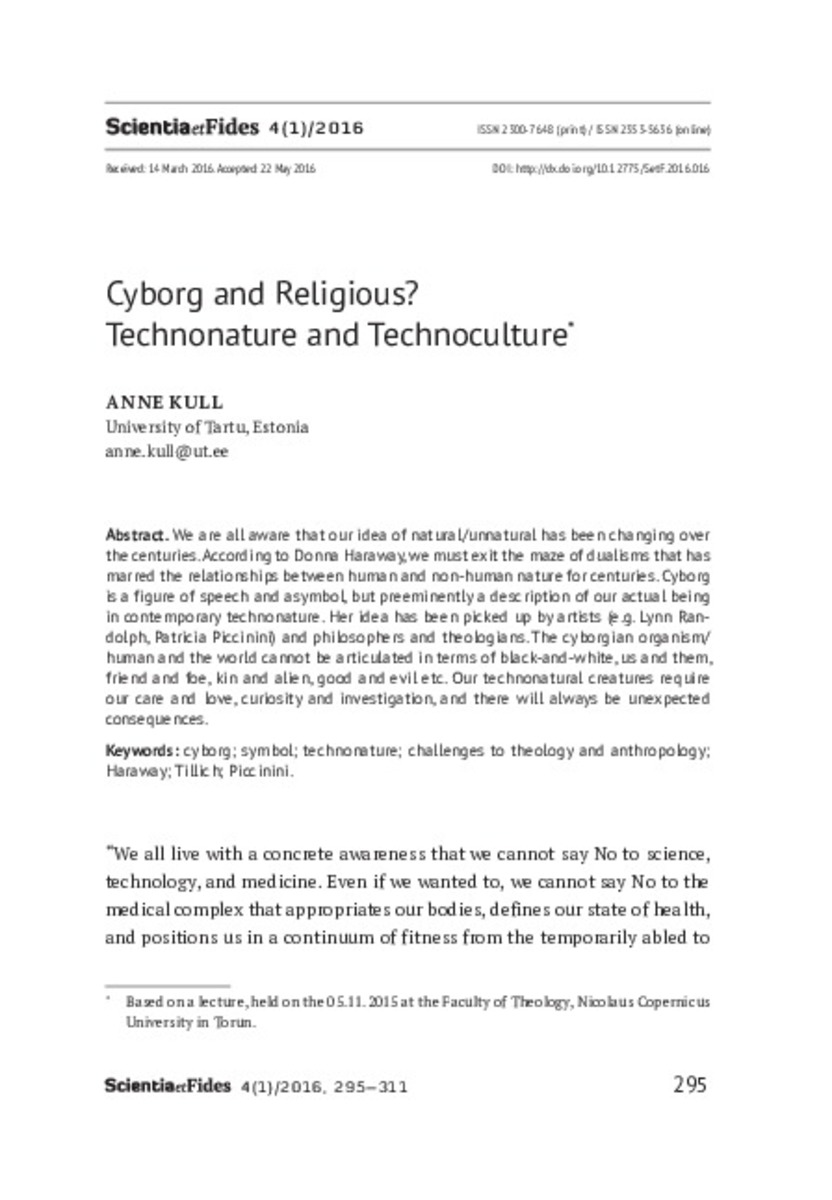Full metadata record
| DC Field | Value | Language |
|---|---|---|
| dc.creator | Kull, A. (Anne) | - |
| dc.date.accessioned | 2016-11-10T11:26:22Z | - |
| dc.date.available | 2016-11-10T11:26:22Z | - |
| dc.date.issued | 2016 | - |
| dc.identifier.citation | Kull, A. (2016). Cyborg and Religious? Technonature and Technoculture. Scientia et Fides, 4, nº 1, pp. 295-311 | es_ES |
| dc.identifier.issn | 2353-5636 | - |
| dc.identifier.uri | https://hdl.handle.net/10171/42190 | - |
| dc.description.abstract | We are all aware that our idea of natural/unnatural has been changing over the centuries. According to Donna Haraway, we must exit the maze of dualisms that has marred the relationships between human and non-human nature for centuries. Cyborg is a figure of speech and asymbol, but preeminently a description of our actual being in contemporary technonature. Her idea has been picked up by artists (e.g. Lynn Randolph, Patricia Piccinini) and philosophers and theologians. The cyborgian organism/human and the world cannot be articulated in terms of black-and-white, us and them, friend and foe, kin and alien, good and evil etc. Our technonatural creatures require our care and love, curiosity and investigation, and there will always be unexpected consequences. | es_ES |
| dc.language.iso | eng | es_ES |
| dc.publisher | Servicio de Publicaciones de la Universidad de Navarra | es_ES |
| dc.rights | info:eu-repo/semantics/openAccess | es_ES |
| dc.subject | Piccinini | es_ES |
| dc.subject | Tillich | es_ES |
| dc.subject | Haraway | es_ES |
| dc.subject | Challenges to theology and anthropology | es_ES |
| dc.subject | Technonature | es_ES |
| dc.subject | Symbol | es_ES |
| dc.subject | Cyborg | es_ES |
| dc.title | Cyborg and Religious? Technonature and Technoculture | es_ES |
| dc.type | info:eu-repo/semantics/article | es_ES |
Files in This Item:
Statistics and impact
Items in Dadun are protected by copyright, with all rights reserved, unless otherwise indicated.






